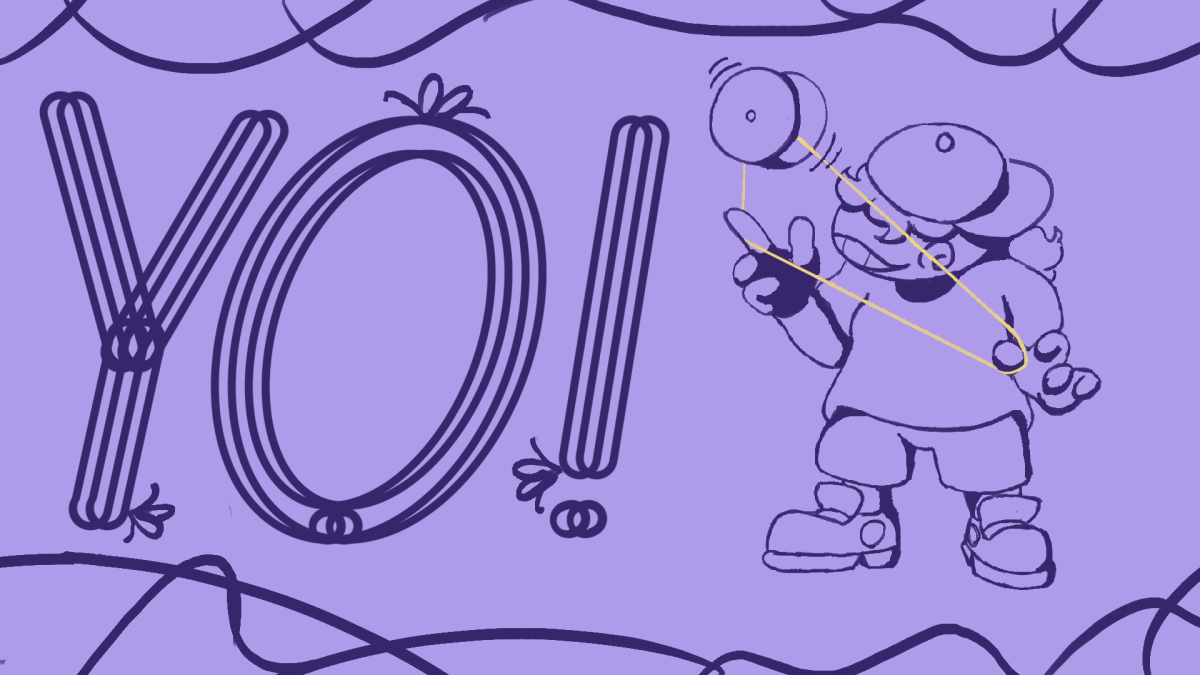The street was packed with music, pop-up stands and crowds shuffling shoulder to shoulder at Packapalooza when I stumbled across a booth handing out goodie bags with various knick-knacks in them.
As I was brushed away with the crowd, I peered into the bag, looking at the spoils of the brief encounter. At the bottom of the bag, a small, blue cylinder caught my eye.
I pulled the toy out of the bag and slipped the string around my right middle finger. For the first time in years, I released the yo-yo from my hands and let it drop.
It wasn’t much; just a simple up and down motion. But in that moment, everything else around me faded. Suddenly, this cheap toy had seemingly become my new way to breathe.
I carried that cheap yo-yo around with me for days after that, finding a sweet relief in taking it out when I needed a break from working tirelessly on extracurriculars, coursework or any other pressing matter I had to finish. When I was stressed out or particularly beat down by a particular task, it helped me to take a step back and throw the yo-yo for a minute.
It did more than just give me a break from working — it cleared my mind and made me feel ready to take on anything.
It might sound silly, getting all this from a yo-yo, but there’s a reason it works. Yo-yoing, like many other techniques that promote mindfulness and ground you in the present, requires focus, repetitive motion and coordination.
Practices that pull your head out of the clouds and back into reality can seriously lower your stress levels and help you focus on yourself and what you need in the present moment.
Alexis Slay, a PhD Student studying psychology and a primary instructor for psychopathology and mental health at NC State, said, “mindfulness, when it is everyday or constant, consistent practice, can help individuals in a variety of ways … It’s intentionally setting a time to become aware of what’s going on.”
At its core, mindfulness is about paying attention with intention. It is the practice of bringing awareness to the present moment, whether that be to your thoughts, body or surroundings, all without judgment of what may surface.
There are a plethora of benefits that come with consistent practice of mindfulness. Mindfulness practices, if done consistently, can reduce stress, lower symptoms of anxiety and depression and even help regulate physical responses like blood pressure or pain.
Slay says that mindfulness is like exercising a muscle: “You’re exercising your mind to rest.”
Over time, consistent practice can strengthen your focus, help you control your emotions and make you feel more balanced.
Mindfulness doesn’t just mean sitting cross-legged in meditation. Walking, lying down or focused breathing all count. Everyday activities like cooking, coloring or tossing a yo-yo are mindful if approached with awareness. What matters is the act of grounding yourself in the present and allowing your mind a moment of rest.
Even still, mindfulness does not always come naturally. It may take some trial and error to find a practice that really fits into your life.
That’s why the real takeaway isn’t just about yo-yos. It’s about finding the thing that gives you that same clarity and joy — your own yo-yo.
At the end of the day, the yo-yo itself isn’t the cure to all of my problems. What matters is that it is something that gives me space to breathe, reset and come back to myself.
For you, it might be walking, lifting, cooking or another hobby entirely. The point is to find your own task that gives you that feeling of being grounded and present.
Because in a world that never slows down, having something simple that brings you joy and grounds you in the present moment might just be the thing that keeps you steady in the long run.




